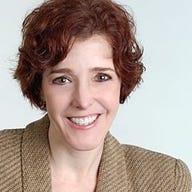Can you still maintain greenhouse gas emission reductions when you're growing? Autodesk suggests how

What formula should your company use to pare back its greenhouse gas emissions? How much, exactly, should it reduce its carbon footprint? How much is enough or not enough? If your footprint increases along with your revenue, should you freak out or look at the intensity of your impact and not the absolute volume? And, if your company is experiencing (gasp!) growth, how do you balance two very real shareholder responsibilities.
After asking itself these questions many, many times internally, design software giant Autodesk has come up with a scientific approach to managing its greenhouse gas profile, and it is challenging other companies to embrace and adopt its formula. The methodology is called Corporate Finance Approach to Climate-stabilizing Targets, or the simpler C-FACT. It builds on the 2008 BT Climate Stabilization Intensity model, but ties the ideas in that formula more closely to requirements of corporate accounting systems. Here are the main principles of the Autodesk plan:
- Targets should be proportional to an individual company's "value to the economy."
- While there are overall corporate targets, business units need to have the autonomy. They should use the goals in their planning, but not all divisions will make the same contributions toward the goal.
- The model SHOULD work with companies of all sizes, which is one of the things that Autodesk advocates the most strongly, given the diversity in size of its customer base.
Emma Stewart, Autodesk's corporate environmental strategy specialist, said the company approached the problem after it realized that many companies (including its own) were randomly picking greenhouse gas emissions reduction targets based on guesswork not the same discipline they would use in their other types of budgeting and financial processes. PLUS, it also had a dilemma. During its fiscal years 2008 and 2009, Autodesk's total greenhouse gas emissions footprint actually increased by 1 percent. At the same time, though, the company's contribution to gross domestic product also increased, so Autodesk's carbon intensity actually dropped by 9 percent per employee and by 5 percent.
Autodesk's C-FACT model builds on the ideas in the 2008 BT Climate Stabilization Intensity model. It includes four basic phases:
- Calculate: IF you have been tracking your carbon footprint numbers, select a year for which you are most confident about the numbers and use that as a base against which you track the management of your carbon intensity. Figure out the gross profit levels for that year and then use that number to figure out the intensity. For example, Autodesk had a carbon intensity ration in its fiscal year 2009 of 0.04 kilograms of carbon dioxide for every dollar of gross domestic product contribution. Once you have have that number, you can use projected/budgeted growth estimates as well as the 2050 Climate Stabilization targets from the Intergovernmental Panel on Climate Change to figure out exactly what you need to do with carbon emissions in the face of that growth. In Autodesk's example, starting with 2010, the company needs to reduce its carbon intensity ratio by 9.08 percent year over year in order to help do its part in reaching the global climate change targets. Those targets call for 85 percent absolute reduction from current levels in industrialized countries and 50 percent against current levels for developing countries.
- Commit Publicly: In Autodesk's case, it has publicly pledged to focus on reductions at this level through 2020, when it will validate the data and then move on.
- Annualize: Convert the long-term target into specific goals for each year, based on growth expectations.
- Adjust: Keep track of the data on an ongoing basis and analyze it closely for fluctuations in your expectations.
Stewart says Autodesk is sharing its model with as many companies as possible and encouraging other businesses to adopt a more scientific method to reducing carbon levels in a manner appropriate to their individual business.
At Autodesk, Stewart says that each senior vice president is responsible for helping reach certain requirements related to their individual business division. "We don't want to prescribe to them what to do, but we will make recommendations, resources and education," she says. The company also is proactively encouraging employees who are big travelers to consider the ramifications of their actions.
You can read more about Autodesk's greenhouse gas emissions program and download its white paper about C-FACT at this link.
Here's a direct link to its new methodology.
One really interesting trend to watch will be the impact that a turnaround in the economy will have on carbon footprint reductions. As companies start to grow again at faster rates, will business executives remain true to their climate commitments?
This post was originally published on Smartplanet.com